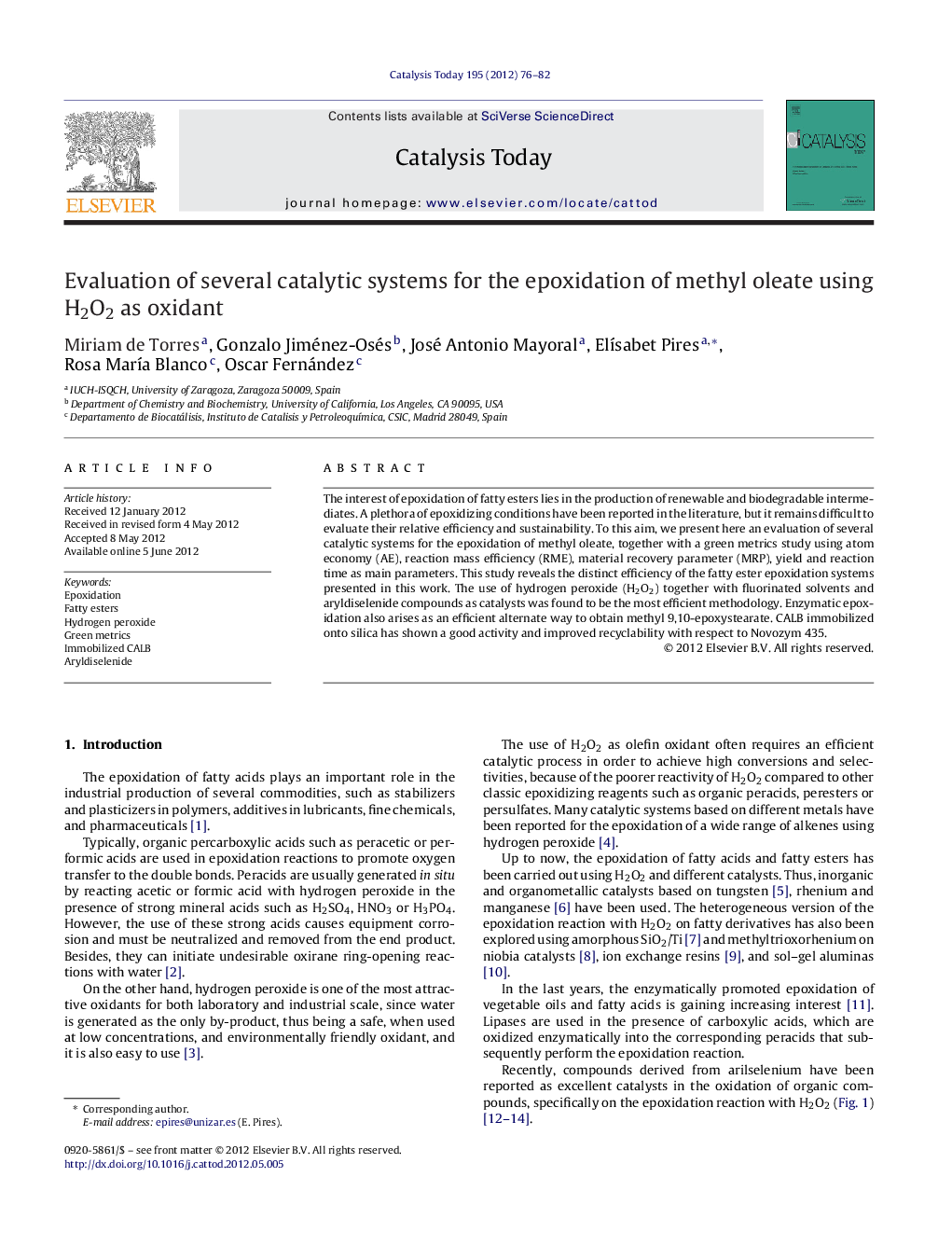| Article ID | Journal | Published Year | Pages | File Type |
|---|---|---|---|---|
| 55132 | Catalysis Today | 2012 | 7 Pages |
The interest of epoxidation of fatty esters lies in the production of renewable and biodegradable intermediates. A plethora of epoxidizing conditions have been reported in the literature, but it remains difficult to evaluate their relative efficiency and sustainability. To this aim, we present here an evaluation of several catalytic systems for the epoxidation of methyl oleate, together with a green metrics study using atom economy (AE), reaction mass efficiency (RME), material recovery parameter (MRP), yield and reaction time as main parameters. This study reveals the distinct efficiency of the fatty ester epoxidation systems presented in this work. The use of hydrogen peroxide (H2O2) together with fluorinated solvents and aryldiselenide compounds as catalysts was found to be the most efficient methodology. Enzymatic epoxidation also arises as an efficient alternate way to obtain methyl 9,10-epoxystearate. CALB immobilized onto silica has shown a good activity and improved recyclability with respect to Novozym 435.
Graphical abstractFigure optionsDownload full-size imageDownload high-quality image (121 K)Download as PowerPoint slideHighlights► Epoxidation of methyl oleate using H2O2 as oxidant. ► Fluorinated solvent as suitable epoxidation media. ► Aryldiselenide catalyst and fluorinated solvents improve yields in the epoxidation reaction of methyl oleate. ► Immobilized CALB based catalysts are sustainable systems for epoxidation of methyl oleate.
